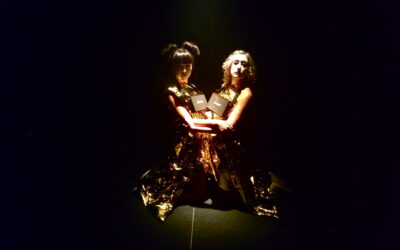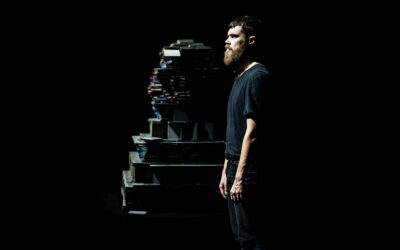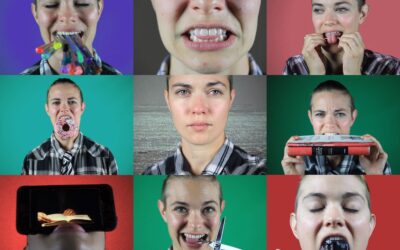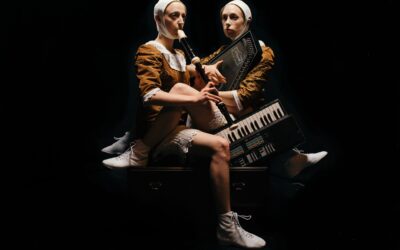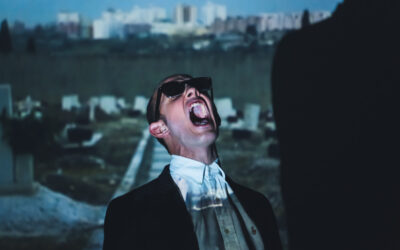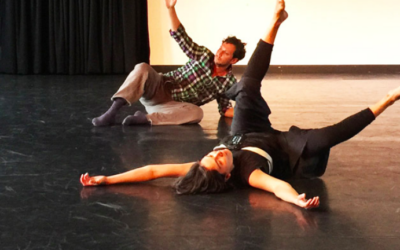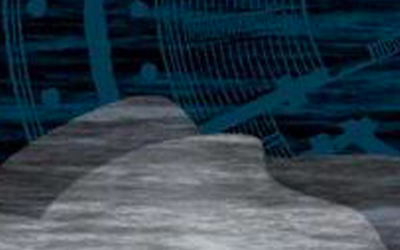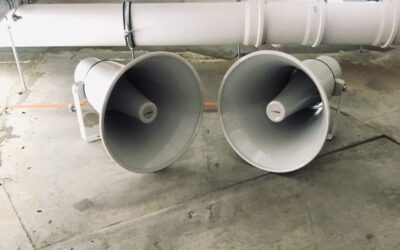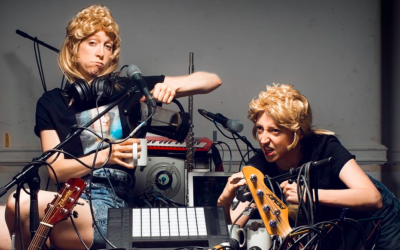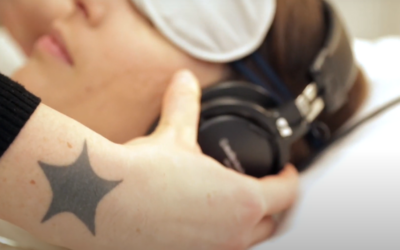#5 Liminal Auralities
‘The archive is built on “house arrest” – the solidification of value in ontology as retroactively secured in document, object, record. This retroaction is nevertheless valorization of regular, necessary loss on (performative) display – with the document, the object, and the record being situated as survivor of time. Thus we have become increasingly comfortable in saying that the achievable object also becomes itself through disappearance – as it becomes the trace of that which remains when performance (the artist’s action) disappears. This is trace-logic emphasizing loss – a loss that archive can regulate, maintain, institutionalize – forgetting that it is a loss the archive produces.’ (Schneider 2001: 104)
‘Quintessential aesthetic features of the liminal appear to be hybridization, indeterminacy, […] and the collapse of the hierarchical distinction between high and popular culture.’ (Broadhurst 1999: 1)
In her seminal essay ‘Performance Remains’, Rebecca Schneider examines the apparent dichotomy contained in, on the one hand, the inherent ephemerality of performance/ its necessary ‘disappearance’ and, on the other, the notion of ‘remains’ as prerequisite of the archive and of historiographic legitimation. Inspired by Peggy Phelan, Jacques Derrida and Jacques Le Goff’s ruminations about the Western epistemological hegemonies of the document, facticity, ocular-centricity, record and patriarchy, Schneider subjects to her examination the relationship between performance and the archive and she proposes interesting new takes on what is at stake. Much important work has been done in the intervening 20 years since 2001 in thinking through and problematising the notions and practices of performance documentation. It is interesting however to revisit and reconsider Schneider’s text under the conditions of a kind of ‘house arrest’ (Derrida via Schneider) making live performance impossible in the first place, as the case has been under the Covid-19 pandemic.
Originally conceived as a 12-part podcast, Lend Me Your Ears has grown to become an incidental archive of 67 academic audio-visual artefacts, trying to document not strictly speaking performance per se, but artistic processes leading up to forms of performance which privilege speech and sound as integral to their dramaturgies. In documenting authorial functions, concerns, and processes and coinciding with the pandemic, these artefacts also bear witness to the acts of improvisation taking place more broadly at this time. As such, they have not been collected under the imperative of ‘imperialism inherent in archival logic’ (Schneider 2001: 101), but by following an impulse to stay connected, share, partake, host, amplify, relate and ultimately amass shared input and wisdom, assemble a community, and outline an ecology suitable for acoustemological (Feld, 2015) investigation.
This has been a hugely collaborative endeavor but I find myself writing this final Editorial as the one who ‘remains’ as the final witness of the process of collection in its aftermath. Within the ensuing silence, my experience is that this is not a position endowed with a sense of authority, but rather questions and anxieties, above all intense solitude and awareness of the vast expanse of works and voices that have not been heard in this selection, due to limitations of time, capacity, resource and reach, or simply chance.
The five themed issues of audio-visual materials presented here mirror the structure of the monograph that will accompany this website. This final issue or chapter complements the Conclusion – which is mostly themed on the ‘digital’ – but is named ‘Liminal Auralities’ in order to embrace the full breadth of the issues emerging at the cross-section of the voices curated here together. Liminality at the core of this selection is not far from Susan Broadhurst’s 1999 definition of liminal performance as ‘marginalised form’, characterised by experimentation, embrace of technology, innovation, heterogeneity and the ‘collapse of the hierarchical distinction between high and popular culture’. Distinctively, it is possible to observe that this sort of ‘collapse’ has in the interim fully permeated the theatre and performance mainstream in the English-speaking world. However, Broadhurst’s definition of the ‘liminal’ may now be expanded to include other changes, transitions and non-binaries including, as highlighted by our interlocutors: gender fluidity, cultural fluidity and Brexit (sair goetz, She Goat, Sleepwalk Collective); genre fluidity, centering of accessibility and digitality (Oliver Zahn, Filippo Michelangelo Ceredi, Slattnë & Yee); connecting the analogue codes of the past with future prospects through aural technologies (Goh & Kolar; Mandic & Ramshaw; Icke & Washburn, Worthen and Kapsali); as well as the search for new languages of performance and discourse.
Ontological fluidity can be seen as also inherent to the performative ‘documents’, ‘objects’ and ‘records’ contained in this ‘archive’. Capturing some of the trends that promise new powerful sources of alternatives to the mainstream, Lend Me Your Ears #5 rounds off our archiving process in a hopefully open-ended, anticipatory and dehegemonising way.
Duška Radosavljević
March 2021
Works Cited
Broadhurst, Susan (1999) Liminal Acts: A Critical Overview of Contemporary Performance and Theory, London and New York: Cassell.
Feld, Steven (2015) ‘Acoustemology’, in David Novak & Matt Sakakeeny, eds, Keywords in Sound, Duke University Press.
Schneider, Rebecca (2001) Performance Remains, Performance Research, 6:2, pp. 100-108, doi: 10.1080/13528165.2001.10871792.
The Gallery
Gallery #5 consolidates five perspectives on theatre and performance-making seeking new means of expression, frequently for material rooted in lived experience. In the context of charting their individual developmental journeys as artists, Italian artist Filippo Michelangelo Ceredi shares the process of making performance using the family archive surrounding the loss of his older brother in 1987 while German artist Oliver Zahn reflects on ways of interrogating archives and historiographic processes through performance, both analogue and digital. Both artists turn the inanimate objects of the archives into co-performers, a trope also discernible in the works of US artist sair goetz who works with an array of objects including ice, film, books, mobile phones and lemons, while the British-French duo She Goat deploy the agency of music, sound and radio performatively in order to explore facets of identity. The agency of sound is also a pervasive dramaturgical and performative element in the body of work of the British-Spanish company Sleepwalk Collective as already signalled by their contribution in LMYE Laboratory #1.
The Sound That You Feel: An Interview with Sammy Metcalfe (Sleepwalk Collective)
Pointing at Things and Saying What They Are: An Interview with Oliver Zahn
The Voice I Want from Myself: An Interview with sair goetz
Everything in Harmony: An Interview with She Goat
The Rhythm of the Archive: an Interview with Filippo Michelangelo Ceredi
The Library
Lend Me Your Ears #5 concludes with a Library double bill bringing together Maria Kapsali’s innovative practice-research project on movement sonification using mobile phone apps to aid kinaesthetic and cognitive agency, learning and accessibility in the arts and, at the other end of the scale, historian W.B Worthen’s illuminating account of how the relevance of Shakespeare’s plays can continue to be served by the technicity of theatre as a medium and its evolution as a technology in itself.
The Salon
Salon #5 brings together three distinct disciplinary perspectives on sound, performance and time – Annie Goh and Miriam Kolar consider archaeological use of digital technologies for reimagining of the sonic past; legal scholars Danilo Mandić and Sara Ramshaw scan notions of performativity of law, improvisation, and AI in justice via AI in music, while theatre-makers Robert Icke and Anne Washbun provide a different slant on the limitations and affordances of archaeology, sonicity, copyright law, theatre and what remains beyond the pandemics.
The Laboratory
Laboratory #5 amplifies, augments and illustrates two of the testimonies given in Gallery #5 – the Aural/Oral Dramaturgies Artist-in-Residence sair goetz outlines the inner workings of their ambitious work in progress The ABCs and XYZs of LMNs while She Goat’s Samira Turner and Eugénie Pastor elaborate on the transformation of their 2019 radio-on-stage piece The Undefinable into a lockdown-appropriate podcast series. Finally, Hanna Slättne and Shannon Yee offer an impactful account of how immersive binaural headphone performance can serve to expand and inform not just the work of theatre artists but also science itself, the medical establishment and anyone who has ever had to care for a person with a brain injury.

